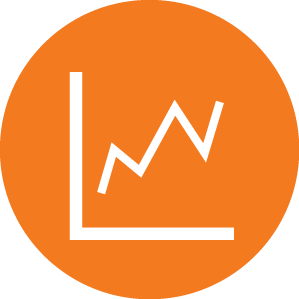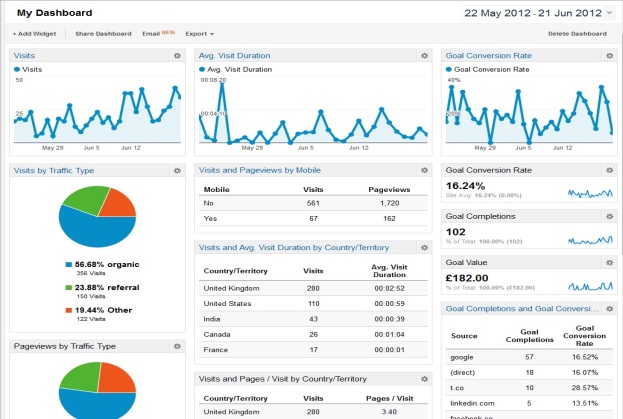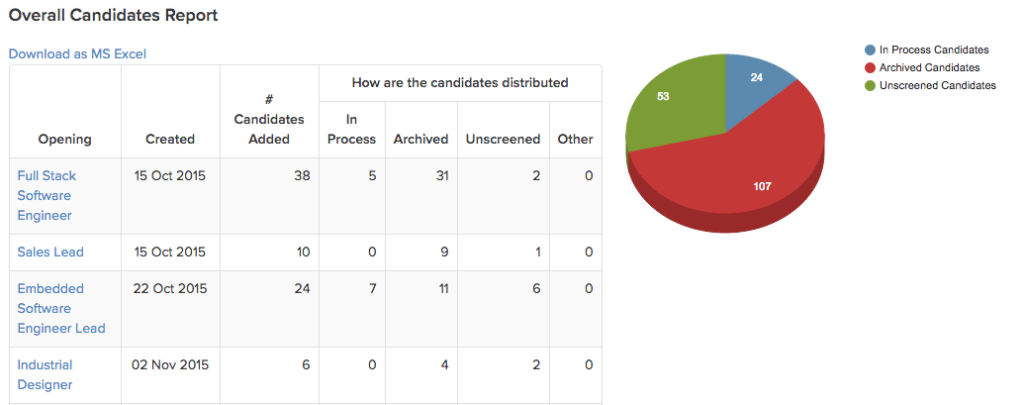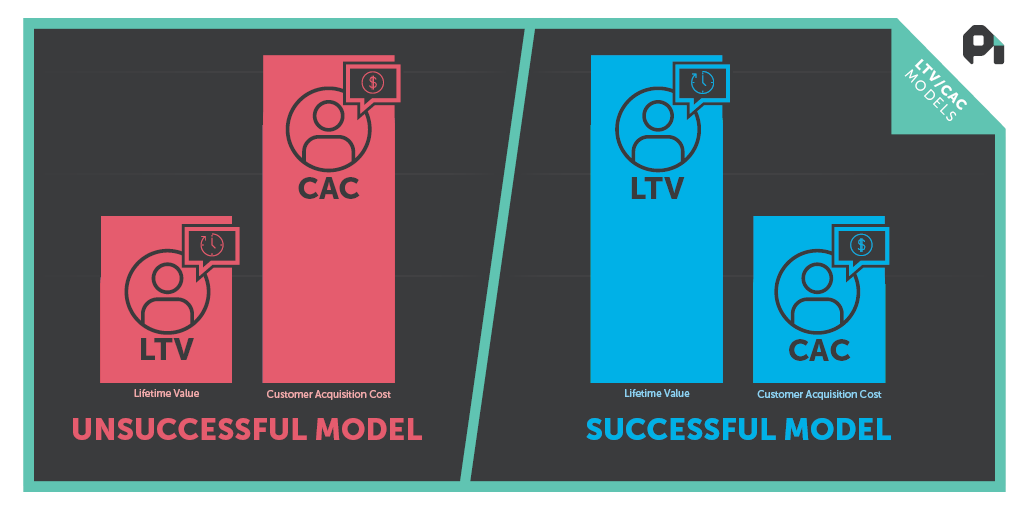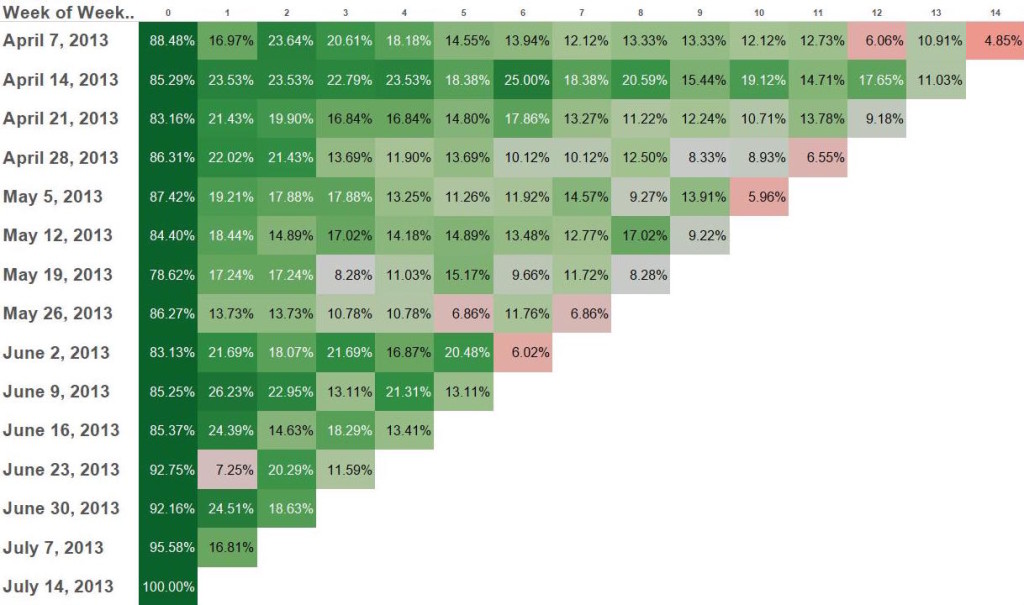As the data person at a small, data-driven company, you can get roped in to measuring things in fields that aren’t your speciality. Sales, marketing, content, UX / product, growth, finance, and more all have measurable aspects that you might be called upon to analyze. This is great for you and the company, since you get a chance to learn about other aspects of the organization and guide your team with data driven decisions, even if your background in the field is on the weak side.
For example, before working at a startup, I would not have considered myself to be a “marketing person”. I think that’s likely typical for an analyst, since so many of us come from math or finance backgrounds. At a startup, though, marketing is a key opportunity for analytics to shine.
1) Marketing
Content Marketing. Moz, Hubspot, and others have really amazing guides to content marketing, and if you’re developing strategy, you should absolutely read them. The key applications of analytics, for me, follow here:
- Every piece of content has a measurable goal. Lead magnets are trying to generate email addresses. Blog posts and infographics might be trying to just generate website traffic, comments, or backlinks. A sales support explainer video or ebook could be focused on increasing sales conversion rate. The important point for you is to make sure that the team decides, before generating content, what the goal for that piece is.
- On a regular basis you, as the analyst, can help setup reporting that shows how each piece of content is achieving its set goal. Once you start to notice trends about which pieces are performing well with your specific audience, you’ll know where to focus your future efforts. This allows your marketing team to make the most of your small early marketing budget.
Paid Marketing Analytics. In addition to content, some companies will want to see an ROI calculation for essentially every dollar of marketing spend. You can help the marketing team prove the value of their efforts. GA, Facebook Ads, Google Ads, and other tools all have ways of attributing conversion events to appropriate customer touchpoints. Be careful to understand the difference between first touch, last touch, and various multi-touch attribution models, since different tools will give you different calculations. One of your biggest value adds can be understanding the differences in models, and deciding which model make sense to use or creating your own. For example, where is your team struggling the most? If it’s general awareness, perhaps focus on first touch success. If it’s conversion rates, multi-touch or last touch might be more important.
While paid marketing analytics are often the direct responsibility of the marketing team, a good analyst can always help deliver more results for the same spend.
2) Recruiting / HR Analytics
Recruiting is one of the key functions of any startup and much of this responsibility falls heavily on the founder, especially in the early days. In order to help her make the most of limited time, an analyst can look at the sources of your most successful candidates. Is a certain website leading to lots of candidates? Are some recruiting events or job boards just a waste of time and money? Is it worth paying a recruiter? What if you consider the value of the time that someone else is spending on recruiting? An applicant tracking system like greenhouse or workable can be a big help here, but in the early days you might not need one. Keep in mind though, that this is one of those areas where dollars and data isn’t always going to be a final decision-maker, since the value of having the founder pitch the job is sort of incalculable. That said, you should at least be aware of the tradeoffs that your team is making in terms of time and money in recruiting and HR!
3) Financial Metrics
If you don’t come from a math or finance background, this area could be more of a challenge for you. If you started in accounting, maybe it won’t be a struggle at all. The financial metrics of cost to acquire a customer (CAC) and lifetime value (LTV) are at the heart of running a successful business, especially in the SaaS world. Churn, cash flow, and your sales funnel can be the difference between a successful business and running out of cash.
Depending on your founding team, they may have a strong handle on the core numbers, via direct calculation or intuition. However, if you have a super product-driven or engineering-focused early team, they may not even know the definitions of these metrics, let alone their values for the business. Make sure that if you don’t have a finance department, you at least begin to measure these important metrics, and go read this amazing SaaS metrics guide, or the equivalent if you’re running something other than a SaaS business.
4) Product / UX / Growth
The user experience of a web or mobile app might have been designed by a product person, an engineer, or a business person. Depending on who designed it, there will likely be different areas in need of improvement. Lucky for us, an analyst can work on testing all of it! You could help lead the charge for a sustainable experimentation and testing process to make your product more successful.
Use data and experimentation to help find your app’s magic moment. Then, use a growth process to encourage more users to reach that moment. I’ve written in other places more about how I would use analytics to start along this process, but it’s important to realize that even if you don’t have a product background, you can be helpful here. You can learn UX best practices so that your experiments are more likely to be successful, plus, you can get started on the process by gathering ideas from others on your team. It’s not important that you come up with the idea for every test; rather, you want to encourage the team to run tests, analyze the data, and promote the highest performing variations within the organization and the application.
What other fields have you worked in using data to drive decision making?
